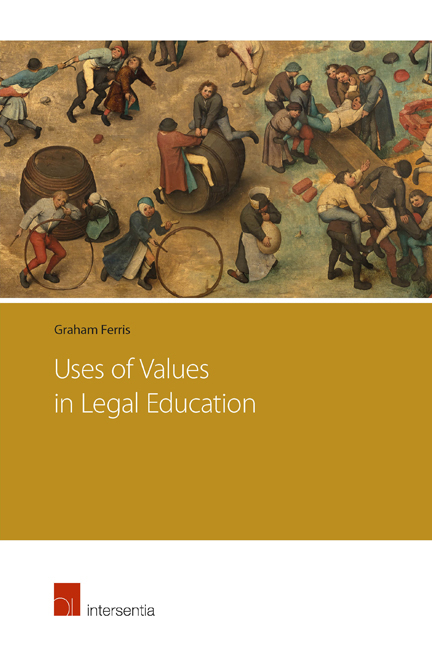Book contents
- Frontmatter
- Dedication
- Foreword
- Preface
- Acknowledgements
- Contents
- PART I STATUS QUO AND WHERE TO GO
- Chapter 1 The Values of Legal Educators
- Chapter 2 Is it the Duty of Educators to Care What is in the Best Interests of Students?
- Chapter 3 The Content of a Value-Informed Curriculum
- PART II HOW VALUES SUPPORT LEARNING
- PART III TEACHING ETHICS
- Table of Cases
- Bibliography
- Index
Chapter 1 - The Values of Legal Educators
from PART I - STATUS QUO AND WHERE TO GO
Published online by Cambridge University Press: 22 November 2017
- Frontmatter
- Dedication
- Foreword
- Preface
- Acknowledgements
- Contents
- PART I STATUS QUO AND WHERE TO GO
- Chapter 1 The Values of Legal Educators
- Chapter 2 Is it the Duty of Educators to Care What is in the Best Interests of Students?
- Chapter 3 The Content of a Value-Informed Curriculum
- PART II HOW VALUES SUPPORT LEARNING
- PART III TEACHING ETHICS
- Table of Cases
- Bibliography
- Index
Summary
This book is a book about the uses of values in legal education. The primary concern is with legal education as an educative enterprise. This leads to a focus upon the development of the student of law. The first value articulated, and indeed endorsed, is that educational practice should be aligned with the interests of the law student first and foremost. Therefore, the focus of this book is the impact of legal education upon the law student.
An alternative approach to legal education is to make alignment with the demands of the profession or society the primary task of legal education:
‘American society has become more dependent on the legal profession for its functioning than ever before. Americans, therefore, have ever more reason to take an interest in the legal profession and, we believe, in how lawyers are prepared for their important public responsibilities.’
‘What sets these courses apart from the art-and-sciences experience is precisely their context: law school as apprenticeship to the profession of law.’
‘… the common aim of all professional education: specialised knowledge and professional identity.’
We will return to competing ideals for legal education below. For now it is sufficient to note that this view comes from North America where law school delivers a three-year full-time post-graduate programme, and there is no further professional stage (such as the Legal Practice Course or the Bar Professional Training Course) nor any compulsory work based apprenticeship stage (such as the Training Contract or Pupillage).
Although this book has wider concerns than just the undergraduate law degree (the LLB) in the UK, and freely uses evidence from other sources, the undergraduate degree is the institutional background to the book. This is because it is the area where the author has most experience. Therefore, the default law student is an undergraduate at a British university reading for a degree in law.
The value of alignment advanced here is not empty, and could be contested, as indeed it is by some concerned with professional education specifically.
- Type
- Chapter
- Information
- Uses of Values in Legal Education , pp. 3 - 42Publisher: IntersentiaPrint publication year: 2015



